
Séminaires
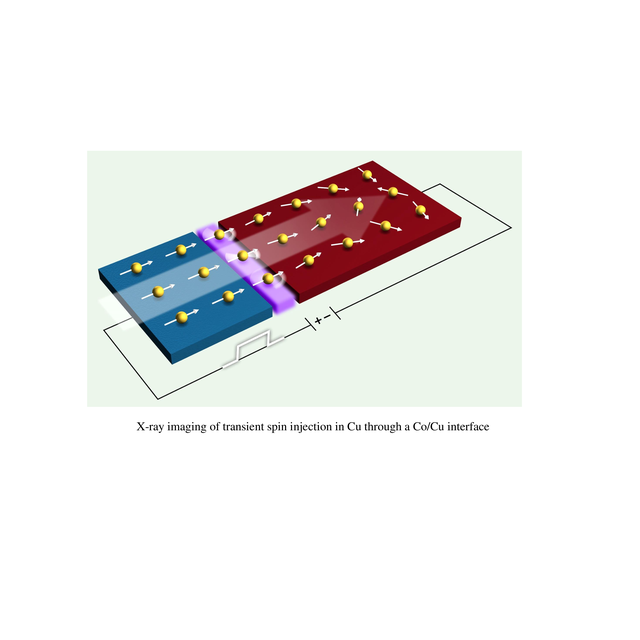
(en anglais) Ultrafast X-ray imaging of magnetic materials
Centre de Nanosciences et de Nanotechnologies, Amphithéâtre, PalaiseauSéminaires
Spin transport is the key for reading or writing bits in spintronic devices by utilizing the Giant Magnetoresistance effect or the spin transfer torque effect. Spin currents have also been shown to play important role in the ultrafast manipulation of magnetization via all optical switching. Hence, detailed understanding of spin currents is a crucial step in development of spintronic devices. In this talk, I will describe our recent experimental studies using emerging synchrotron and free electron laser techniques that can probe these materials with both high spatial and temporal resolution. I will discuss our work on imaging spin dynamics in nano-devices and probing spin transport across ferromagnet/copper interface. We have developed an extremely sensitive spectro-microscopy detection method based on element specific x-ray magnetic circular dichroism to probe spin transport in Co/Cu devices. The sensitivity of this new ‘lock-in’ technique has allowed us to detect the extremely small transient Cu magnetization with sub 100 nm spatial resolution. This technique has also enabled imaging of nanoscale motion of localized nonlinear spin waves in spin torque oscillator, allowing a detailed insight into p-like character of localized spin-wave excitation. I will also discuss our recent work on ultrafast imaging following optical pumping at free electron laser sources.
Roopali Kukreja joined Materials Science and Engineering department at UC Davis as an Assistant Professor in Fall 2016. She received her B.S. in Metallurgical Engineering and Materials Science from the Indian Institute of Technology Bombay in 2008 and then her M.S. and Ph.D. degrees in Materials Science and Engineering from Stanford University in 2011 and 2014, respectively. Prior to her appointment at UC Davis, Kukreja worked as a postdoctoral researcher at the UC San Diego, with Profs. Oleg Shpyrko (Physics Department) and Eric Fullerton (Center for Magnetic Recording Research). Her research interests at UC Davis focuses on ultrafast dynamics in nanoscale magnetic and electronic materials, time resolved X-ray diffraction and imaging techniques, thin film deposition and device fabrication. She is recipient of Melvin P. Klein Scientific development award (2015), Air Force Young Investigator Award (2018) and Nuclear Regulatory Commission faculty development award (2019).
External visitors should be register
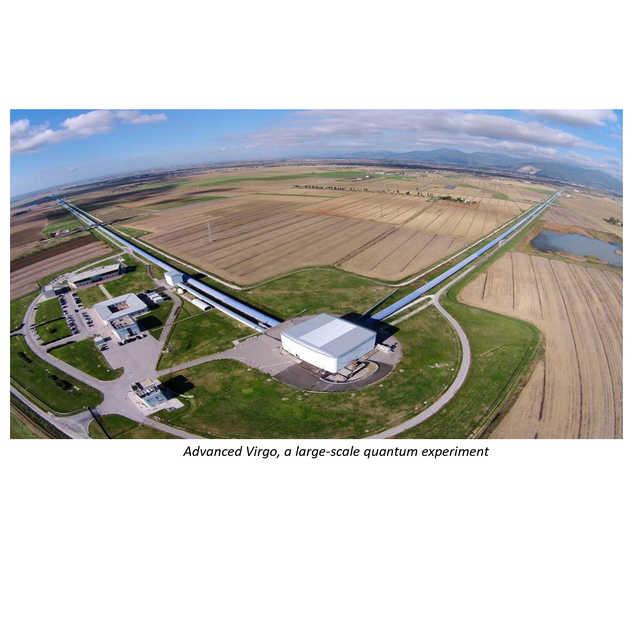
(en anglais) Gravitational wave detection: a quantum experiment
Centre de Nanosciences et de Nanotechnologies, Amphithéâtre, PalaiseauSéminaires
Detecting gravitational waves required 4 decades of experimental effort to reach a sensitivity at the h~10-21 level, corresponding to mirror displacements below 10-18 m. Apart from classical noise (seismic noise, thermal noise...), it was realized as soon as in the late 70s that quantum fluctuations of the light field were responsible for the Standard Quantum Limit, a sensitivity limit that second-generation gravitational-wave interferometers such as Advanced Virgo and Advanced LIGO are about to reach. A number of ideas have been considered to beat the SQL: squeezed states of the light field, tailoring the optical response function or taking advantage of EPR correlations between two optical beams.
I will present the current status of the interferometers, how squeezed light is now routinely used to increase the range of Advanced Virgo and Advanced LIGO,and how further progress is required for the next generation of large-scale interferometers.
Pierre-François Cohadon joined what has become the Optomechanics and Quantum Measurement group at Laboratoire Kastler Brosselin 1996 to start graduate work. He was involved in the pioneering experiments performed at LKB: demonstration of feedback cooling of a mechanical resonator, demonstration of intracavity radiation pressure cooling, proof-of-principle demonstration of optomechanical correlations... For a few years, he has been involved in the Virgo project for the detection of gravitational waves, where investigatesthe use of squeezing to further increase the sensitivity of Advanced Virgo.
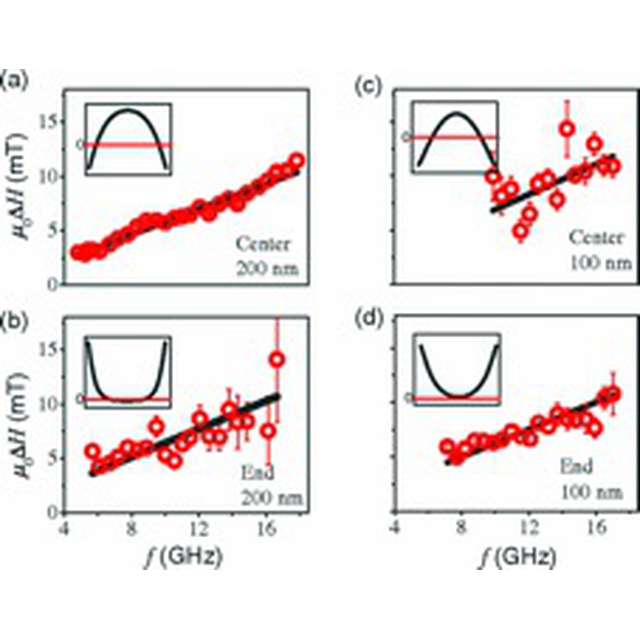
(en anglais) Magnetization Dynamics in Nanostructures and Thin Films
Centre de Nanosciences et de Nanotechnologies, Amphithéâtre, PalaiseauSéminaires
In the first part of my talk I will discuss the outstanding question in the broad field of spin dynamics with ferromagnets whether the damping of gyromagnetic precession is in actuality subject to finite size effects at the nanometer length scale. We demonstrate that the effective damping in nanomagnets depends strongly on the excited spin-wave mode and on the size of the nanomagnet. The damping constant a is a critical parameter for spintronics devices, e.g., spin-torque-transfer magnetic random-access memory (STT-MRAM). Optical measurements of the magnetization dynamics are particularly challenging when the diffraction-limited laser spot is much larger than the size of the nanomagnet. We developed a novel heterodyne magneto-optical microwave microscope (H-MOMM) to measure ferromagnetic resonance in individual, well-separated nanomagnets by use of heterodyne detection of magneto-optical signals at microwave frequencies. The experimental results are in good agreement with calculations based on the theory of dissipative transverse spin-currents internal to a conductive magnetic film, where the spin-currents are proportional to the spatial curvature of the excited mode [1], [2].
In the second part I will demonstrate how the Dzyaloshinskii-Moriya Interaction (DMI) can be directly determined from the frequency of propagating spin-waves. The DMI has recently attracted great interest as it is the origin of many chiral phenomena including chiral domain-walls and skyrmions. We quantified the DMI induced frequency-shift with Brillouin-Light-Scattering spectroscopy (BLS). I will present DMI measurements on several different multilayer systems. We demonstrated in a series of Ni80Fe20/Pt samples for a range of Ni80Fe20 thicknesses that the DMI is proportional to the Heisenberg exchange which has been predicted earlier by Fert [3] and Moriya [4] for metallic oxides and magnetic spin-glasses [5]. In a second study we studied the influence of an oxide layer on the DMI in Cu/CoFe and Pt/CoFe samples. We found that an oxide layer increases the DMI [6]. Finally, I will show results for a series of CoFeB/Cu(x)/Pt system, where we find that the DMI and the proximity magnetization in Pt are correlated.
[1] H.T. Nembach, J.M. Shaw, C.T. Boone and T.J. Silva, Physical Review Letters, 110, 117201 (2013), Highlight in Nature Nanotechnology 8, 227 (2013)
Hans T. Nembach is a Senior Research Associate at JILA, University of Colorado and Research Associate at the National Institute of Standards and Technology (NIST) in Boulder, Colorado. He received his PhD in physics from the Technical University Kaiserslautern, Germany in 2006, where he worked in the group of Prof. Burkhard Hillebrands. He began work at NIST in 2006 under the auspices of a DAAD postdoctoral fellowship. In 2015 he received the NIST Physical Measurement Laboratory Distinguished Associate Award. His research interests are magnetization dynamics in thin films, multilayers and magnetic nanostructures.
External visitors should be register
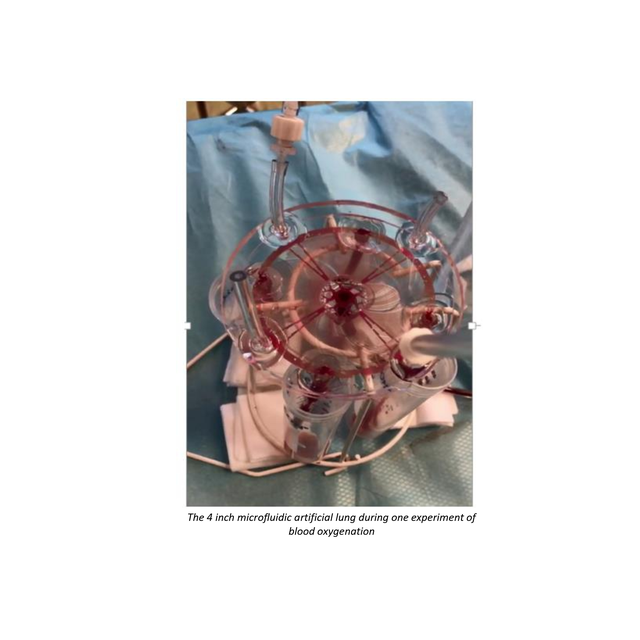
(en anglais) Microfluidic devices for biomedical applications: from bioanalysis to artificial biomimetic organs
Centre de Nanosciences et de Nanotechnologies, Amphithéâtre, PalaiseauSéminaires
In this talk I will review some examples of microfluidic devices that can handle very small volumes of biological fluid for medical applications. In the field of biomedical analysis, current macroscopic methods based on chromatography techniques coupled to mass spectrometry remain long and tedious, which may prove detrimental for certain pathologies where a fast and early diagnosis is often desired. On-chip analytical methods are therefore very promising, since analysis can be carried out in 30 minutes with a microliter of biological liquid. In the first part of my talk, I will present two recent examples of bioanalytical chips for the detection of trace biomolecules: 1/ nanofluidic devices allowing enrichment by a factor of 1000 after few minutes in a selective way [1] and 2/ graphene-based biosensors for direct DNA electrochemical detection at the sub-femtomolar level [2-3].
More recently, microfluidics technologies are also used to develop “organs-on-chips” with living cells that are cultured within 3D devices. Concerning this recent emerging field, I will conclude my talk by presenting two novel microfluidic devices. The first one is an artificial lung that exhibits the largest surface area of gas exchange at 4 inches wafer scale [4] compared to previously reported devices. I will show that its oxygen transfer rate is strongly related to the thickness of the thin membrane inserted between both blood capillaries and air microchannels. The second device aims to develop a tumor-on-a-chip as an innovative 3D in vitro model of pancreatic cancer able to recreate the complex physiology of the tumor microenvironment and, more specifically, the blood vasculature around the spheroid.
References :
[1] A-C Louër, A Plecis, A. Pallandre, J-C Galas, A. Estevez-Torres, A-M. Haghiri-Gosnet, Anal. Chem. 85 (2013) 7948−7956
[2] B. Zribi, E. Roy, A. Pallandre, S. Chebil, M. Koubaa, N. Mejri, H. Magdinier Gomez, C. Sola, H. Korri-Youssoufi, A-M Haghiri-Gosnet, Biomicrofluidics 10 (2016) 014115
[3] B. Zribi et al, Nanoscale 8 (2016) 15479 and B. Zribi et al, Carbon 153 (2019) 557-564
[4] A-M. Haghiri-Gosnet, Lyas Djeghlaf, Julie Lachaux, Alisier Paris, Gilgueng Hwang, European Patent EP18306405.4 (29 Oct. 2018) "Microfluidic gas exchange devices and methods for making same"
Anne-Marie Haghiri (CNRS, DR1) is co-leader of the “Microsystems and NanobioFluidics” Department at C2N (UMR9001). She has published 98 peer-reviewed articles (h index=37), 8 book chapters and 5 patents. In the last 10 years, she has coordinated 4 ANR projects and participated to 2 European projects. She is developing "soft" micro/nanostructuration of biocompatible materials for innovative microfluidic platforms as well as organs-on-chip (partner of RHU ANR BioArtLung H2020 project). She has an active interest in on-chip electrophoresis for early diagnosis as well as electrochemical detection of both DNA and proteins.
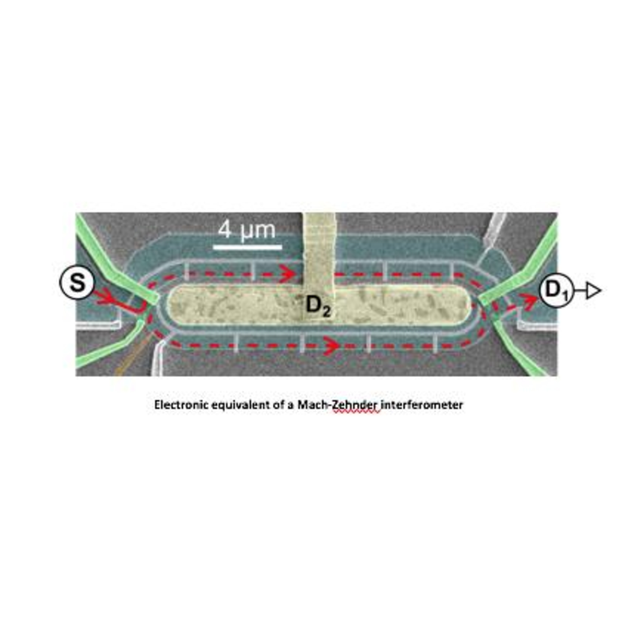
(en anglais) Interplay between Coulomb interaction and quantum coherence in electronic circuits
Centre de Nanosciences et de Nanotechnologies, Amphithéâtre, PalaiseauSéminaires
Mesoscopic physics studies relatively large objects with properties that can only be described by quantum phenomena such as the particle-wave duality. Small electrical circuits cooled down to low temperature where billions of electrons behave as quantum particles, provide a prominent illustration. However, the electrons’ quantum character is generally limited to the micrometric scale because of Coulomb interaction with other nearby charges.
In this seminar, I will first show that it is possible to strongly reduce Coulomb interaction’s detrimental effect on quantum coherence by circuit engineering. Second, I will explain how to exploit Coulomb interaction to transfer the quantum state of electrons to indistinguishable electrons a few microns away.
Hadrien Duprez : Graduated from the École Polytechnique de Montréal in 2016, then obtained a masters degree on Quantum Devices at Université Paris Diderot in 2017. During his undergraduate studies, he was lucky to do a one year internship on 2D photonic crystal cavities for low-power laser application at NTT in Japan. He now is a 2nd year PhD student in the Quantum Physics in Circuits team at C2N.
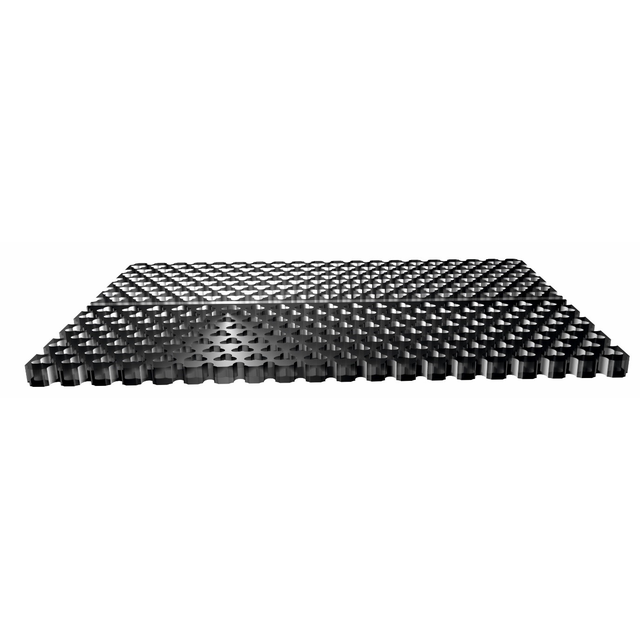
(en anglais) Photon-phonon interaction driven by complexity
Centre de Nanosciences et de Nanotechnologies, Amphithéâtre, PalaiseauSéminaires
Precision is a virtue in science in general and nanotechnology in particular where carefully fabricated nanometer-scale devices hold great promise in both classical and quantum regimes. Ground-state cooling or phonon amplification require, for example, a sideband resolved photon-phonon coupling where unavoidable imperfections often impose severe performance limits. However, imperfection and disorder are ubiquitous in Nature and emerge with a role particularly important in nanoscale devices.
In this talk, I will explore the limits imposed by imperfection in different nanodevices, but not only. In certain cases, disorder may be invoked to enable new functionalities and can be exploited to enhance the light-matter interaction in different fields of nanotechnology such as quantum photonics, nonlinear photonics, phononics and optomechanics.
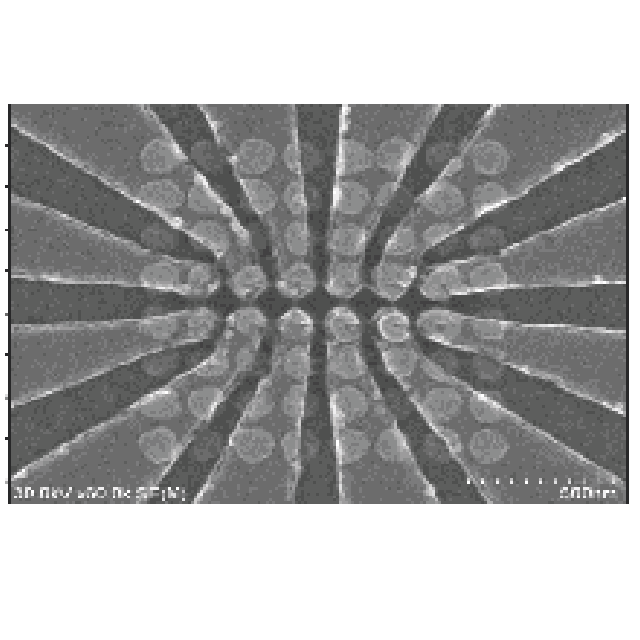
(en anglais) Reservoir computing using magnetic nano-dots system and Brownian computing using skyrmions
Centre de Nanosciences et de Nanotechnologies, Amphithéâtre, PalaiseauSéminaires
First, I introduce our design of reservoir computer using MRAM technology. Then, I will talk about recent progresses in making Brownian computer using skyrmions.
Brownian computing is a method to perform calculation with ultra-low energy consumption.
Up to now, we have succeeded in making a Hub (branch of skyrmion channel) and in voltage control of the diffusion. Ratchet and C-join are also essential devices that we need to realize.
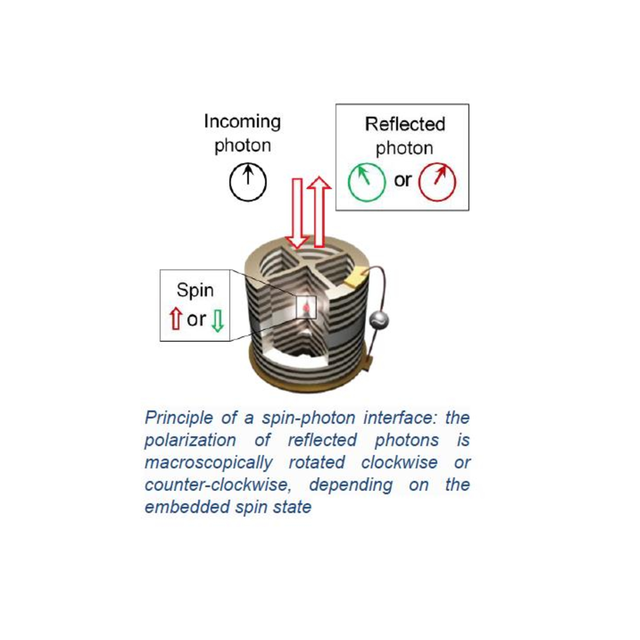
(en anglais) Pushing photon-photon and spin-photon interactions to the single photon level
Centre de Nanosciences et de Nanotechnologies, Amphithéâtre, PalaiseauSéminaires
How can we make individual photons interact with each other, or with a single stationary quantum bit? I will show that efficient light-matter interfaces can be developed to address these challenges, using semiconductor quantum dots in optimized microcavity structures. This led to a number of achievements in the last decade, including:
- The engineering of an effective photon-photon interaction, using an optical nonlinearity at the single-photon limit.
- The demonstration of an efficient spin-photon interaction, using the spin of a confined semiconductor hole as a stationary quantum bit. The current efforts for realizing deterministic quantum gates and fundamental quantum experiments, based on a new generation of spin-based devices, will also be discussed.
Loïc Lanco was hired in 2007 as an Associate Professor at University Paris Diderot, after a PhD in Laboratory « Quantum Materials and Phenomena » (MPQ), and a one year post-doc at the Laboratory for Photonics and Nanosctructures (LPN, now C2N). His research activity focuses on light-matter interfacing at the single-photon level, using semiconductor quantum dot / cavity structures. He was nominated at the Institut Universitaire de France in 2019. He headed the Physics BSc in Paris Diderot from 2014 to 2018.
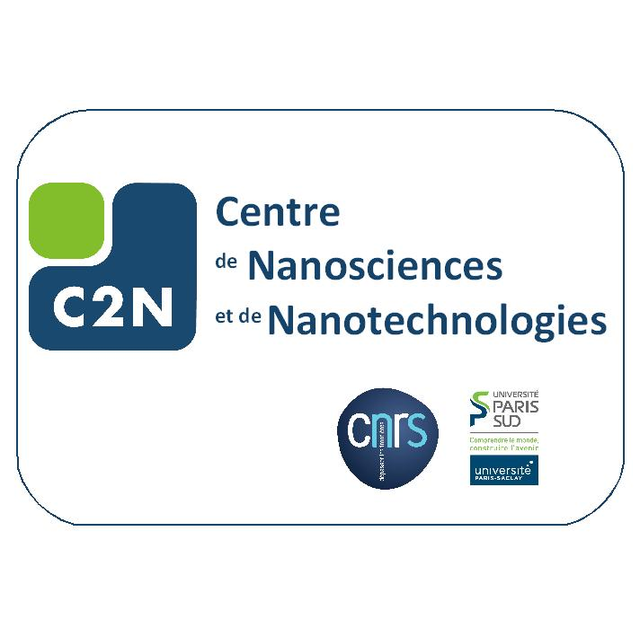
(en anglais) Modeling of Electrocaloric Materials for Waste Heat Recovery
Centre de Nanosciences et de Nanotechnologies, A005, PalaiseauSéminaires
There is a need for the development of comprehensive, multi-scale theoretical tools in the search for better materials. This is essentially at the core of the recent “materials genomics/informatics” initiatives that seek to accelerate materials discovery through the use of computations across length and time scales, supported by judicious experimental work. In this talk we will apply these principles
to understand pyroelectric, electrocaloric, elastocaloric, and flexocaloric properties of ferroelectric materials. Pyroelectrics can convert heat into electricity by cycling around thermally- and electricallyinduced polarization changes, where the energy density scales with the product of the polarization change and applied field. The challenges in realizing caloric energy conversion system are multi-scale
and multi-faceted, requiring a combination of first principles computations, phenomenological theory, classical thermodynamics, materials synthesis, and eventually system design [1]. We will discuss our successes and challenges with relating modeled to measured material properties for bulk and epitaxial thin film ferroelectrics. We will provide specific examples related to electrocaloric, elastocaloric, and flexocaloric properties of ferroelectrics [2,3].
1. S. P. Alpay, J. V. Mantese, S. Trolier-McKinstry, Q. M. Zhang, and R. W. Whatmore, “Next Generation Electrocaloric and
Pyroelectric Materials for Solid State Electrothermal Energy Interconversion,” MRS Bulletin 39, 1099 (2014).
2. H. Khassaf, T. Patel, S. P. Alpay, “Combined Intrinsic Elastocaloric and Electrocaloric Properties of Ferroelectrics,” J. Appl.
Phys. 121, 144102 (2017).
3. H. Khassaf, T. Patel, R. J. Hebert, and S. P. Alpay, “Flexocaloric Response of Epitaxial Ferroelectric Films,” J. Appl. Phys. 123,
024102 (2018).
Contacts: lucie.krzaczkowski@cea.fr, philippe.lecoeur@u-psud.fr, brahim.dkhil@centralesupelec.fr
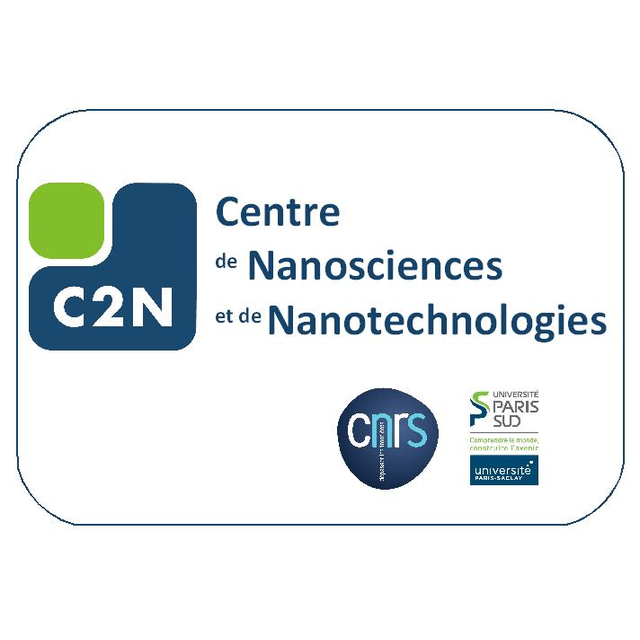
(en anglais) Hectometer Revivals of Quantum Interference
Centre de Nanosciences et de Nanotechnologies, Amphithéâtre, PalaiseauSéminaires
The Hong-Ou-Mandel (HOM) interference is the most significant photonic effect, one with no counterpart in classical optics. The interference is fragile–it is sensitive to distinguishability in all degrees of freedom–and normally occurs on the order of very short path length differences–micrometers to millimeter. Despite these limitations, HOM interference has proven application in quantum computing, metrology and quantum foundations.
We report HOM interference observed after more than 100m path length difference between photons from a cavity-enhanced spontaneous parametric down-conversion source, equating to the 84th HOM revival. In addition to producing HOM revivals, the source can alternatively generate two-photon NOON states. These two features result from the unique half waveplate ’flip trick’ of our source effectively producing two distinct frequency combs, each of which can be temporally accessed. This combination makes our source a novel metrological tool to allow enhanced precision on a sub-wavelength scale in a quantum-secure way.
W. Y. Sarah Lau completed a double degree in Science and Education (secondary) at the University of Queensland (UQ). After working briefly as a high school teacher Sarah has returned to UQ as a PhD student in Andrew White’s Quantum Technology Lab. She initially focused on quantum foundations and has since transitioned to work on the narrowband single photon source, which has moved down to the Australian National University in Canberra for integration with their quantum memory setup. Sarah now also works there and is investigating squeezing from the narrowband setup alongside the quantum memory integration.